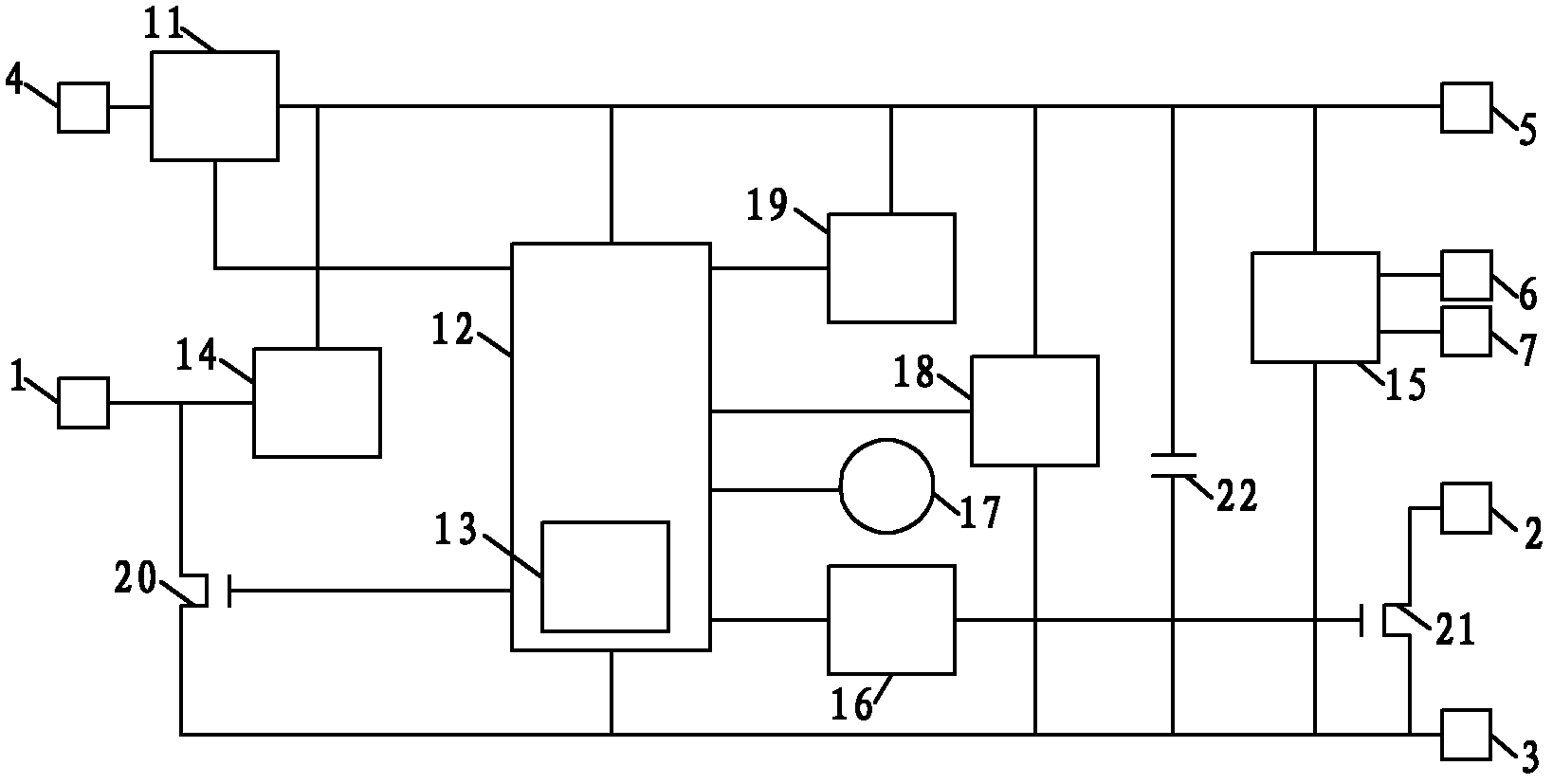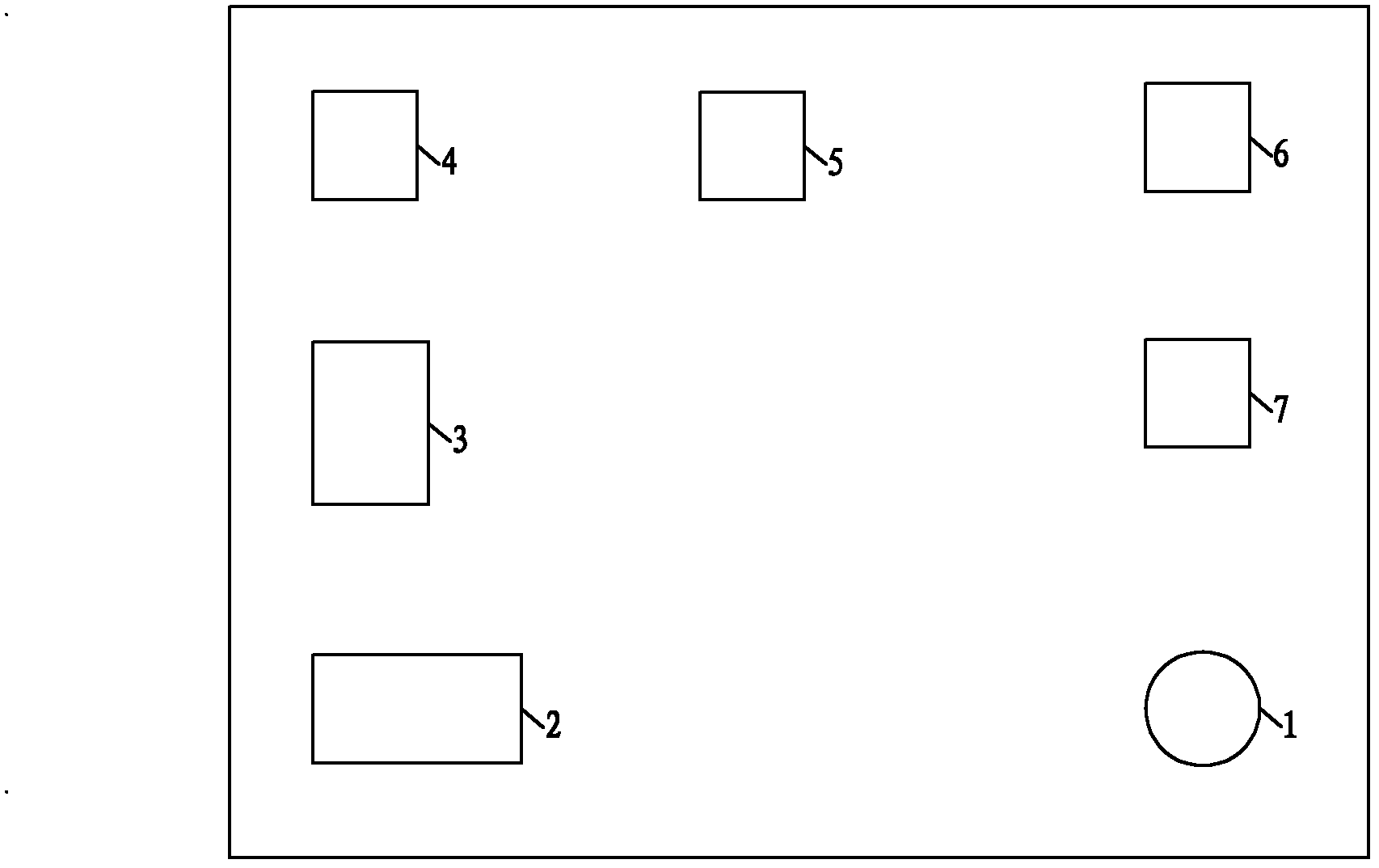RFID (radio frequency identification) tag chip
A technology of RFID tags and chips, applied in the field of radio frequency identification, can solve the problems of increased system complexity, high cost, complex structure, etc., and achieve the effect of low cost, high performance, and huge market prospects
- Summary
- Abstract
- Description
- Claims
- Application Information
AI Technical Summary
Problems solved by technology
Method used
Image
Examples
Embodiment Construction
[0023] The present invention will be further described below in conjunction with drawings and embodiments.
[0024] Please refer to figure 1 and figure 2 as shown, figure 1 It is a structural block diagram of the RFID tag chip of the present invention; figure 2 It is a schematic diagram of the bonding pad of the RFID tag chip of the present invention.
[0025]In this embodiment, an RFID tag chip includes: an excitation mode setting unit and a transceiver unit; the excitation mode setting unit includes seven pads, which are respectively the radiation antenna pin 1, the coupling antenna pin 2, and the negative pole of the power supply. Pin 3, external battery pin 4, power supply positive pin 5, first trigger coil pin 6 and second trigger coil pin 7; the transceiver unit includes: power control unit 11, logic unit 12, memory 13 , ultra-high frequency rectification unit 14, low frequency rectification unit 15, pulse generating unit 16, oscillator unit, parallel voltage regul...
PUM
 Login to View More
Login to View More Abstract
Description
Claims
Application Information
 Login to View More
Login to View More - Generate Ideas
- Intellectual Property
- Life Sciences
- Materials
- Tech Scout
- Unparalleled Data Quality
- Higher Quality Content
- 60% Fewer Hallucinations
Browse by: Latest US Patents, China's latest patents, Technical Efficacy Thesaurus, Application Domain, Technology Topic, Popular Technical Reports.
© 2025 PatSnap. All rights reserved.Legal|Privacy policy|Modern Slavery Act Transparency Statement|Sitemap|About US| Contact US: help@patsnap.com



